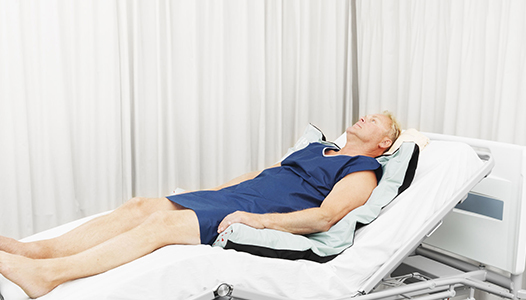Prevention
You can help prevent bedsores by frequently repositioning yourself to avoid stress on the skin. Other strategies include taking good care of your skin, maintaining good nutrition and fluid intake, quitting smoking, managing stress, and exercising daily.
Tips for repositioning

Consider the following recommendations related to repositioning in a bed or chair:
- Shift your weight frequently. Ask for help with repositioning about once an hour.
- Lift yourself, if possible. If you have enough upper body strength, do wheelchair pushups — raising your body off the seat by pushing on the arms of the chair.
- Look into a specialty wheelchair. Some wheelchairs allow you to tilt them, which can relieve pressure.
- Select cushions or a mattress that relieves pressure. Use cushions or a special mattress to relieve pressure and help ensure that your body is well positioned. Do not use doughnut cushions, as they can focus pressure on surrounding tissue.
- Adjust the elevation of your bed. If your bed can be elevated at the head, raise it no more than 30 degrees. This helps prevent shearing.
Tips for skin care

Consider the following suggestions for skin care:
- Keep skin clean and dry. Wash the skin with a gentle cleanser and pat dry. Do this cleansing routine regularly to limit the skin's exposure to moisture, urine and stool.
- Protect the skin. Use moisture barrier creams to protect the skin from urine and stool. Change bedding and clothing frequently if needed. Watch for buttons on the clothing and wrinkles in the bedding that irritate the skin.
- Inspect the skin daily. Look closely at your skin daily for warning signs of a pressure sore.



